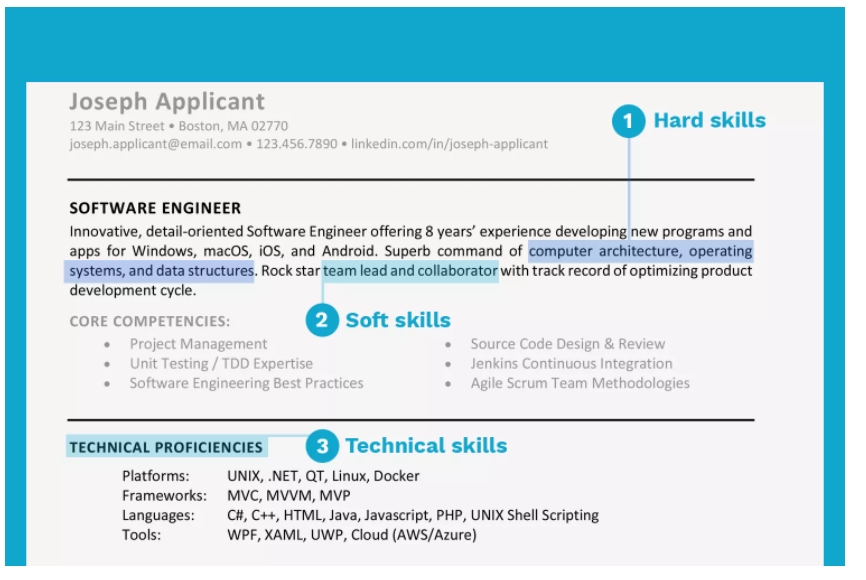Listing relevant skills
It’s important to incorporate important skills throughout your entire resume, beginning with your headline which should, when possible, include the most important keyword, the job title. You can also list skills in a dedicated skills section of your resume if using a hybrid format.
Whether you’re trying to catch a recruiter’s eye or rise to the top of an applicant tracking system’s rankings, seeding your resume with relevant resume keywords should be a top priority. One simple way to do this is through a resume skills section.
A designated skills list is an optional resume section and not part of a traditional resume format. Find a good hybrid/combination or functional resume template if you want a skills section on your resume.
Here are four ways to show off what you can do with a resume skills section.
-
Create a simple bullet list resume skills section
The most straight-forward way is to make a list immediately following your contact information and summary statement.
Hitting all the top job requirements with your skills list will make a recruiter’s ears perk up. It will also help you rank highly for a keyword search within an applicant tracking system. It’s an attention-getter, but don’t stop there. Just because you list these job skills on your resume doesn’t mean a corporate recruiter will believe you.
If you use this type of resume skills section, be sure to add context for every skill elsewhere in your work experience. If a recruiter is excited by “Product Adoption” in your skills section, the first thing they’ll do is skim your work experience to figure out when, how, and how much you used that skill.
The same goes for resume skills sections with rating systems. Giving yourself a 5/5 or “expert” rating on a skill doesn’t matter if that expertise isn’t communicated in other ways. Context is everything.
-
Create a skills list with expanded bullets
One way to add context is by lengthening.
For example: CRM – 4+ years leveraging Salesforce on a daily basis. Earned Salesforce Certification in January 2017. Also have experience with Pipedrive (1 year) and Highrise (6 months).This approach is more impactful than only listing the skills, however it takes up more room at the top of your resume. Consider trimming down your bullet list to your most important four or five skills when using this method. Then, work your remaining skills into your work experience. the bullet points.
-
List additional skills after each job
If you’d like to stay closer to a reverse-chronological resume format, consider adding shorter skill lists to each work experience section.
Fitting all the skills into the bigger text block might make it awkward for the recruiter to read, but removing them all would make the descriptions overly vague. By working some hard skills right into the work experience and listing others afterwards, you can make your experience easier to read while still covering all your bases.
-
Break resume skills sections into categories
If you’re applying for a role requiring a broad skillset and your work history lends itself to it, consider categorizing your skills into multiple lists.
This often works best for people transitioning into management roles where they need to prove that they can work with people from multiple disciplines.
The Digital Marketing list would include specifics like search engine optimization, pay per click advertising, affiliate marketing, and so on.
This approach can also be used to show off both technical know-how and softer leadership skills. Some even advocate for having a dedicated soft skills section on your resume.
You can also combine bullet points into a single section to better categorize skills.

For example:
- Software development (php, Javascript, CSS, HTML, Ruby)
- Data Science (R, SQL, MySQL, Excel, Modeling)
- Project Management (Agile, Scrum, Cost Management)
Desired soft skills vary by role, but here are 10 soft skills recruiters love to see: Adaptability. Communication. Creativity. Customer Service. Leadership. Organization. Problem Solving. Teamwork. Time Management. Work Ethic.